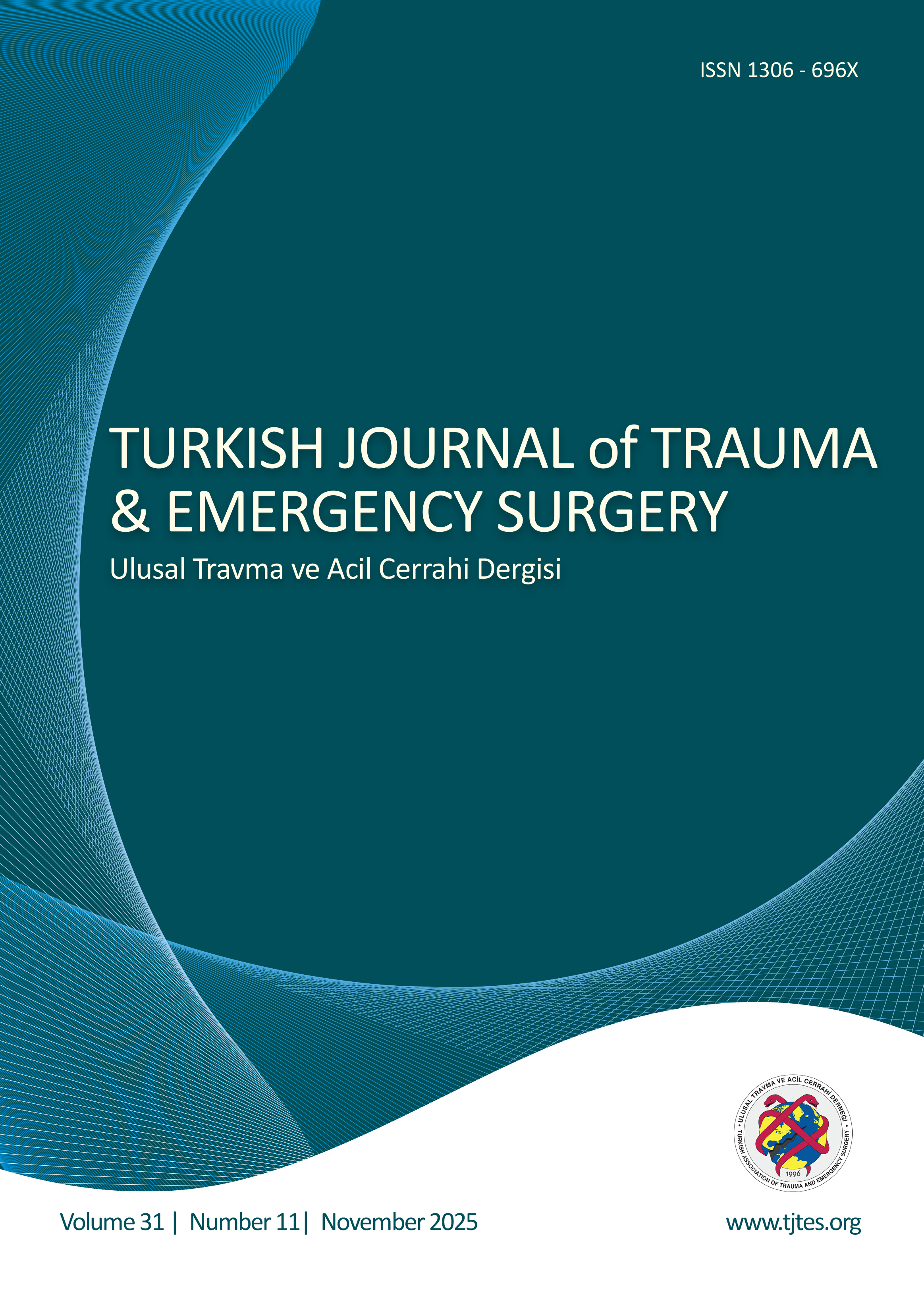Hızlı Arama
Glenoid fossaya uzanan skapula cisim kırıklarının cerrahi tedavisi: Cerrahi teknik ve erken dönem sonuçlar
Güray Altun1, Khaled Shatat1, Mehmet Kapıcıoğlu2, Ali Ersen3, Kerem Bilsel21Sağlık Bilimleri Üniversitesi, Ümraniye Eğitim ve Araştırma Hastanesi, Ortopedi ve Travmatoloji Kliniği, İstanbul2Bezmialem Vakıf Üniversitesi Tıp Fakültesi, Ortopedi ve Travmatoloji Anabı̇lı̇m Dalı, İstanbul
3İstanbul Üniversitesi Tıp Fakültesi, Ortopedi ve Travmatoloji Anabı̇lı̇m Dalı, İstanbul
AMAÇ: Bu çalışmanın amacı, açık redüksiyon ve internal fiksasyon yapılan skapula kırıklı hastalarda cerrahi tekniği tanımlamak ve fonksiyonel sonuçları değerlendirmekti.
GEREÇ VE YÖNTEM: Bu çalışmada, Mart 2014 Eylül 2019 tarihleri arasında üç farklı merkezde, Ideberg tip dört ve beş skapula kırıklı, Judet yaklaşımıyla ameliyat edilen 10 hasta geriye dönük değerlendirildi. En az iki yıllık takiplerin sonucunda, tüm hastaların DASH ve Constant skorları değerlendirildi.
BULGULAR: Hastaların üçünde sol ve yedisinde sağ tarafta kırık bulunmaktaydı ve ortalama yaşları 35.1±9.75idi. Ortalama Constant ve DASH skorları sırasıyla 87.9±13.68 ve 5.57±5.21idi. İki hastada, yaklaşık supraglenoid çentikten 2 cmlik mesafede, supraskapular sinirde travmatik tam kat yaralanma tespit edildi ve epinöral teknikle tamir edildi. İki yıllık takipler sonucunda hastalarda infraspinatus kas atrofisi gelişti.
TARTIŞMA: Sonuç olarak, bu çalışma glenoid eklem yüzüne uzanan deplase skapula kırıklı hastaların cerrahi tedavisinde Judet yaklaşımının tatminkar sonuçlarıyla güvenli bir tercih olduğunu desteklemektedir. Ek olarak, iki hastada rastlanan ve cerrahi sırasında tamiri yapılan travmatik supraskapular sinir hasarının daha kısıtlı veya modifiye yaklaşımlarla tanı konmasının zor olacağı kanaatindeyiz.
Anahtar Kelimeler: Judet, skapula kırığı, supraskapular sinir.
Surgical treatment of scapula body fractures extending glenoid fossa: Surgical technique and early results
Güray Altun1, Khaled Shatat1, Mehmet Kapıcıoğlu2, Ali Ersen3, Kerem Bilsel21Department of Orthopaedics and Traumatology, University of Health Sciences, Ümraniye Training and Research Hospital, İstanbul-Türkiye2Department of Orthopedics and Traumatology, Bezmialem Vakıf University Faculty of Medicine, İstanbul-Türkiye
3Department of Orthopedics and Traumatology, İstanbul University Faculty of Medicine, İstanbul-Türkiye
BACKGROUND: The aim of this study was to describe the surgical technique and evaluate functional outcomes following open reduction and internal fixation in patients with scapular fractures.
METHODS: In this study, ten patients with scapular fractures with Ideberg type four and five, who had undergone operatively with the Judet approach in three different orthopedic centers between March 2014 and October 2018, were evaluated retrospectively. By the end of at least a 2-year follow-up period, postoperative Disabilities of the Arm, Shoulder and Hand (DASH), Constant questionnaires were evaluated by all participating patients.
RESULTS: Three of these patients had fractures on the left; seven patients had fractures on the right side, and the average patient age was 35.1±9.75. Mean Constant and DASH scores were 87.9±13.68 and 5.57±5.21, respectively. In two patients, about 2 cm adjacent to the suprascapular notch, perioperative suprascapular nerve injury was stated and sutured using the epineural technique. By the end of the 2-year follow-up of these two patients, infraspinatus muscle atrophy had occurred. However, external rotation muscle strength was 4/5 in both patients.
CONCLUSION: This study suggests that scapula fractures extending glenoid articular surface can be safely fixed through the Judet approach and had satisfactory results. In addition, two patients with traumatic suprascapular nerve injury were encountered during the surgery and repaired which may be hard to diagnose with modified or minimal incisional approaches.
Keywords: Judet, scapula fracture, suprascapular nerve.
Makale Dili: İngilizce





